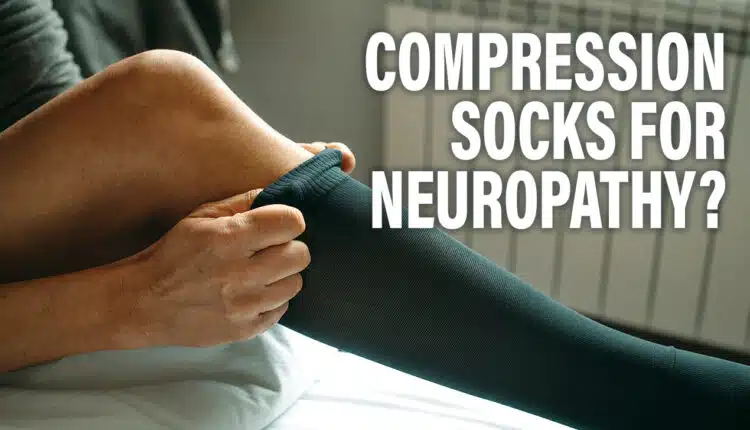Do Compression Socks Support Nerve Recovery?
Compression socks have surged in popularity online, praised for easing swelling and potentially aiding nerve repair. While not as flashy as prescriptions or devices, these snug socks spark debate: do they truly support nerve recovery, or are they overhyped?
What Are Compression Socks?
Compression socks differ from regular socks. They fit tightly, applying gradient pressure—snug at the ankles and looser up the calves—to boost circulation. Designed for function, not fashion, they:
-
Push blood back to the heart, preventing fluid pooling in feet and ankles
-
Encourage lymphatic drainage
-
Reduce inflammation
Athletes, nurses, chefs, and anyone standing for long periods (like 12 hours) use them, as do those recovering from surgery or prone to leg swelling. While some find them comfortable, others feel constricted, yet their ability to enhance circulation is undeniable.
Do Compression Socks Repair Nerves?
Healthy circulation fuels nerve repair by delivering nutrients and oxygen to damaged nerves. Compression socks improve blood flow and reduce swelling, creating a supportive environment for recovery. However, relief isn’t regeneration. Peripheral nerves in your hands, arms, feet, and legs repair slowly—about 1 millimeter daily or 1 inch monthly—slower than nail growth.
Nerve repair requires:
-
Mitochondrial Energy: Fuels regeneration
-
Anti-Inflammatory Support: Reduces nerve-damaging inflammation
-
Critical Nutrients: Methylcobalamin, benfotiamine, R-alpha lipoic acid, folate, pyridoxal-5-phosphate, acetyl-L-carnitine, and L-citrulline rebuild myelin sheaths and nerve axons
-
Time and Patience: Recovery can take months or up to two years
Compression socks don’t directly repair nerves but support the process by optimizing circulation and reducing swelling, key factors in neuropathy recovery.
How Compression Help Neuropathy
Compression socks create an environment conducive to nerve recovery by:
-
Reducing leg swelling
-
Improving blood flow to deliver nutrients
-
Easing pressure in lower limbs to lessen inflammation
Nerve repair isn’t about one solution—it’s about building a regeneration ecosystem. Compression socks act as one branch, supporting the surface while nutrients and therapies drive deeper recovery. For complementary strategies, see our nerve support formula guide.
How to Repair Nerves Effectively
True nerve repair starts from within. To regenerate nerves, nourish your body like a tree—feed the roots and provide light. Key steps include:
-
Critical Nutrients: Use methylcobalamin, benfotiamine, R-ALA, folate, P5P, acetyl-L-carnitine, and L-citrulline to restore cellular function and rebuild nerves.
-
Antioxidants: Shield nerves from oxidative stress with nutrients like R-ALA.
-
Photobiomodulation: Apply therapeutic light to awaken mitochondria, signaling cells to repair damage.
These pillars, combined with lifestyle changes like a neuropathy-friendly diet (see our neuropathy diet guide), drive lasting recovery.
When to Use Compression Socks
Wear compression socks if you experience:
-
Heavy or tired legs
-
Prolonged standing or sitting
-
Swollen feet or ankles by day’s end
-
Circulatory issues like varicose veins
-
Post-surgery swelling
-
Travel-related leg swelling (flying or long car rides)
-
Worsening neuropathy symptoms with swelling or inflammation
They can reduce symptoms and support recovery by improving circulation.
Who Should Avoid Compression Socks?
Compression socks aren’t for everyone. Avoid them if you:
-
Have severe peripheral arterial disease (PAD)
-
Lack protective sensation in your feet, risking unnoticed pressure
-
Feel pain or unusual discomfort when wearing them
Consult your doctor before using compression socks to ensure they’re safe for you.
Conclusion: Compression Socks as Part of Nerve Recovery
Compression socks don’t directly repair nerves, but they create a supportive environment by reducing swelling and boosting circulation. Paired with critical nutrients, a healthy lifestyle, and therapies like photobiomodulation, they play a valuable role in your neuropathy recovery journey.
Start wearing them today and share your experience in the comments! How have compression socks helped your symptoms?
Struggling with Neuropathy?
Dr. Coppola and Dr. Monteiro’s dedication to combating neuropathy is deeply personal, stemming from Dr. Monteiro’s experience with her mother’s severe chemo-induced neuropathy. This personal journey fueled their commitment to develop a systematic, drug-free approach to reversing neuropathy.
They founded the San Antonio Neuropathy Center, where they’ve successfully treated over 18,000 patients over the past two decades. Their acclaimed book, “Defeat Neuropathy Now in Spite of Your Doctor,” along with their neuropathy product line, stands as a testament to their expertise and innovative solutions.
Recognized as leading neuropathy specialists in America, Dr. Coppola and Dr. Monteiro offer a beacon of hope for those diagnosed with this challenging condition. If you or a loved one is seeking relief from neuropathy, reach out to us at 844 400-0101 or email us through our contact page – Click here.
Your path to healing can start today.



Comments are closed, but trackbacks and pingbacks are open.